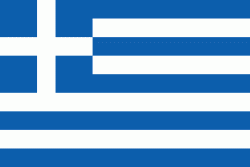Amarynthos (Amárynthos)
The area of Amarynthos, along with the region of Eretria, has a long and rich history. Many scientists place Eretria of the Mycenaean period in the location of the present town of Amarynthos. The archaeological artifacts testify a permanent settlement in this location since the Late Neolithic period, around 3000 BC, which was one of the most important Helladic settlements and a significant port on the island of Euboea, during the Early Bronze Age. It had built its own trade with the Aegean Islands, concluded from the findings of Cycladic art in the region.
During the Middle Helladic period, Amarynthos had developed its trade with mainland Greece and produced magnificent pieces of the Minyean art, while in the Late Helladic period it was one of the main areas of Euboea. During the 2nd millennium BC, the Ionians arrived in the southern parts of Greece and settled Euboea, while the name of Amarynthos is mentioned in clay tablets with inscriptions in the Linear B script. Apart from the trade, the locals also occupied with agriculture, pastoralism, fishing and copper processing.
In ancient times, there was a festival in Amarynthos called "Amarýnthia", dedicated to Amarysia Artemis, who was worshipped as the patron goddess of Amarynthos and whose shrine was located in the plain of the region, being one of the most important in Central Greece. Parts of it were excavated between 1987 and 1992, hosted now at the Museum of Eretria. In Greek mythology, Amarynthos was a man from Eretria who usually ran after Artemis because of his love for her, and his name was given to the town. Pausanias in his Description of Greece, mentions, along with Amarynthos, a town in Attica called Athmonia, where the Athenians also celebrated Amarysia Artemis in a festival as splendid as the one in Amarynthos (1.31.5). Callimachus says that in Amarynthos, Artemis was worshipped as hornless (kolainis), because Agamemnon sacrificed to her a hornless ram made of wax, while Claudius Aelianus refers to the Eretrians who maimed animals to Artemis at Amarynthos. Strabo, in the Geographica, locates the village of Amarynthos seven stadia distant from the walls of Eretria, to which the village belongs (10.1.10).
Amarynthos, like the whole of Euboea, was later ruled by the Macedonians, the Romans, the Byzantines, the Venetians and the Ottoman Turks until it joined the modern Greek state around 1830. After the Greco-Turkish War (1919–22) and the population exchange between Greece and Turkey, the arrival of Greek refugees from Asia Minor in Euboea, many of which settled in Amarynthos, boosted the population of the town. In World War II, the Nazi Germany's troops burnt parts of the town.
Map - Amarynthos (Amárynthos)
Map
Country - Greece
 |
 |
| Flag of Greece | |
Greece is considered the cradle of Western civilization, being the birthplace of democracy, Western philosophy, Western literature, historiography, political science, major scientific and mathematical principles, theatre and the Olympic Games. From the eighth century BC, the Greeks were organised into various independent city-states, known as poleis (singular polis), which spanned the Mediterranean and the Black Sea. Philip II of Macedon united most of present-day Greece in the fourth century BC, with his son Alexander the Great rapidly conquering much of the ancient world, from the eastern Mediterranean to the North Western parts of India. The subsequent Hellenistic period saw the height of Greek culture and influence in antiquity. Greece was annexed by Rome in the second century BC, becoming an integral part of the Roman Empire and its continuation, the Byzantine Empire, which was culturally and linguistically predominantly Greek.
Currency / Language
| ISO | Currency | Symbol | Significant figures |
|---|---|---|---|
| EUR | Euro | € | 2 |
| ISO | Language |
|---|---|
| EN | English language |
| FR | French language |
| EL | Greek language |















